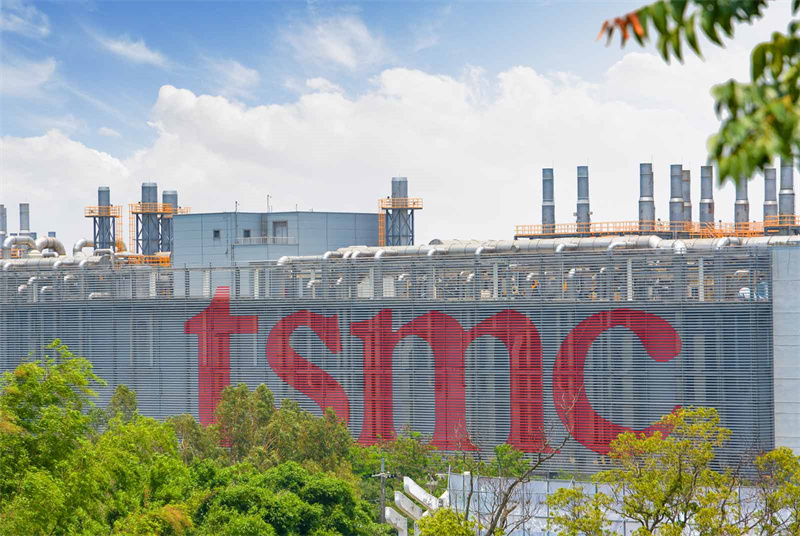On January 15, 2025, the U.S. Department of Commerce's Bureau of Industry and Security (BIS) introduced a new round of export control regulations (EAR) targeting China's semiconductor industry. The latest measures tighten restrictions on advanced semiconductor manufacturing, requiring front-end semiconductor fabs and outsourced semiconductor assembly and test (OSAT) providers to conduct additional due diligence on chips manufactured using 16/14nm nodes or more advanced process technologies.
The new rules officially took effect on January 31, 2025, and have already begun impacting the production and delivery of advanced Chinese semiconductor products.
White List for Semiconductor Manufacturing and OSAT Providers
The BIS regulations introduce a “white list” of semiconductor design companies and OSAT providers. Foundries such as TSMC are permitted to continue producing advanced-node chips for companies on the white list without restrictions. However, chip design companies that are not on the white list—whether Chinese or foreign—must either apply for special U.S. approval or have their final chip packaging and testing handled by an approved OSAT provider.
Chip Design Companies on the White List:
The list includes major global players such as AMD, Alphabet, Amazon, Analog Devices (ADI), Apple, BAE Systems, Block, Boeing, Broadcom, Cerebras Systems, Cisco Systems, Hewlett-Packard Enterprise (HPE), Honeywell International, Infineon, Intel, IBM, L3Harris Technologies, Marvell, MediaTek, Meta, Micron, Microsoft, Mitsubishi, Nokia, Nvidia, NXP, Qualcomm, Raytheon, Realtek, Sony, Tesla, Texas Instruments (TI), and Western Digital.
OSAT Providers on the White List:
Recognized OSAT providers include Amkor Technology, Ardentec Corporation, ASE Technology Holding, Doosan Tesna, Fabrinet, Giga Solution Tech, GlobalFoundries, HT Micron Semiconductors, Intel, IBM, KESM Industries Berhad, LB Semicon, Micro Silicon Electronics, Nepes Corporation, Powertech Technology (PTI), QP Technologies, Raytek Semiconductor, Samsung Electronics, SFA Semicon, Shinko Electric Industries, Sigurd Microelectronics Corporation, TSMC, and UMC.
Stricter Restrictions on Chip Exports
Under the new regulations, OSAT providers working with non-white-listed chip design firms must ensure that the packaged chips meet one of the following conditions to be eligible for export to China:
1. The final packaged IC must have an “aggregate approximate transistor count” of less than 30 billion, or
2. The packaged IC must not contain high-bandwidth memory (HBM), and for exports through 2027, the total transistor count must be under 35 billion, or
3. For exports in 2029 or later, the transistor count must be below 40 billion.
Immediate Impact on Chinese Semiconductor Companies
As a result of the new regulations, TSMC has already suspended deliveries of 16/14nm and below advanced-node chips to Chinese chip design firms not on the white list unless their final OSAT provider is an approved company.
Industry sources have confirmed that several Chinese semiconductor firms are already facing disruptions. Affected companies must obtain certification from a white-listed OSAT provider before TSMC will resume shipments.

For Chinese firms that already rely on approved OSAT companies for advanced chip packaging, the impact is relatively limited. However, companies using non-white-listed OSAT providers face significant challenges. Even if they immediately shift orders to approved OSATs, the transition period could take months, delaying chip production schedules and potentially resulting in customer losses.
One Chinese autonomous driving chip company confirmed that its production remains unaffected by the restrictions, as its chips are manufactured by TSMC and packaged by a white-listed OSAT provider. Similarly, a Chinese smartphone chip manufacturer reported minimal impact, as its advanced-node chips are produced by TSMC and packaged by ASE's subsidiary, SPIL, an approved OSAT provider.
However, a senior executive from another Chinese smartphone chip firm acknowledged that while the new regulations have caused some disruptions, the company can mitigate the impact by adjusting its OSAT order ratios.
Further Challenges for Chinese IC Design Firms
According to ijiwei, some Chinese IC design companies have been required to outsource their entire fabrication, production, packaging, and testing processes, without being allowed to intervene in any stage of production. This further complicates operations and increases uncertainty for Chinese chipmakers.
U.S. Aims to Block China's AI and HPC Chip Development
The primary goal of these new U.S. restrictions is to further constrain China's AI chip development and prevent Chinese firms from circumventing export controls by outsourcing TSMC's advanced-node chip fabrication and then using non-approved OSAT providers to complete packaging for high-performance computing (HPC) and AI chips.
However, China’s AI industry continues to advance despite restrictions. Companies like DeepSeek have made breakthroughs in large-scale AI model training, reducing reliance on Nvidia’s high-performance GPUs. Recent tests show that a Chinese AI chip running DeepSeek’s models achieved performance equivalent to approximately 60% of Nvidia’s H100 GPU in inference tasks.
While the U.S. continues to tighten semiconductor restrictions, China’s chip and AI industries are actively adapting, developing alternative technologies, and enhancing domestic capabilities. The long-term implications of these regulatory shifts remain uncertain, but the global semiconductor landscape is rapidly evolving.
+86 191 9627 2716
+86 181 7379 0595
8:30 a.m. to 5:30 p.m., Monday to Friday
